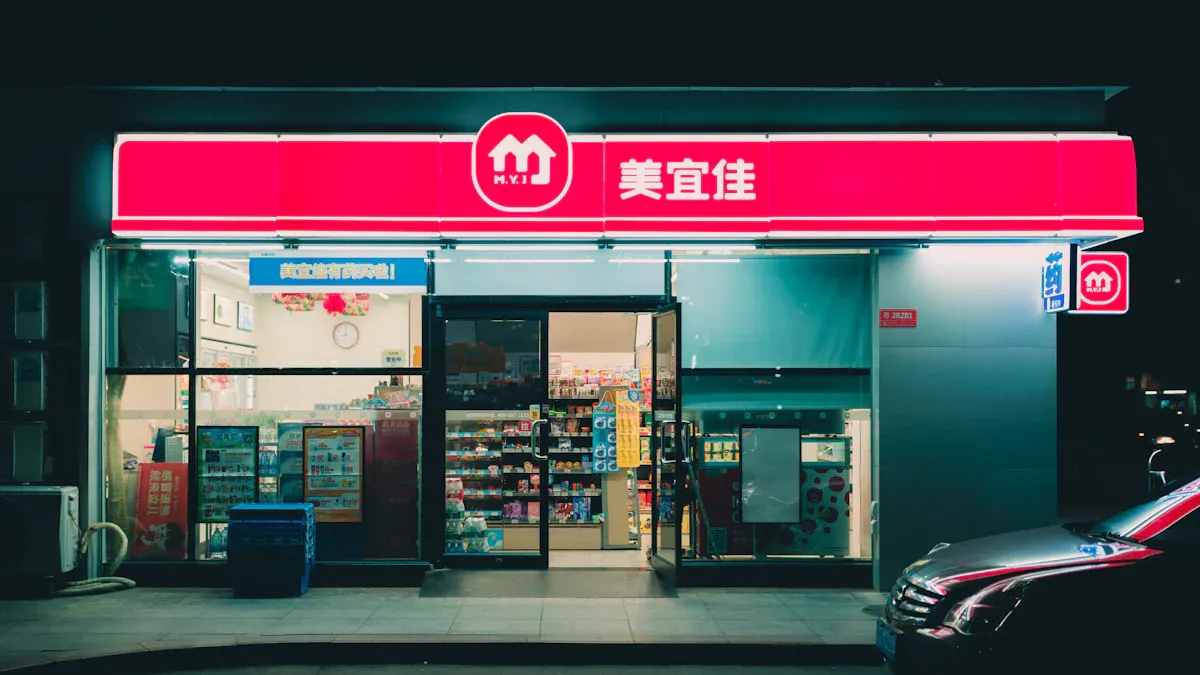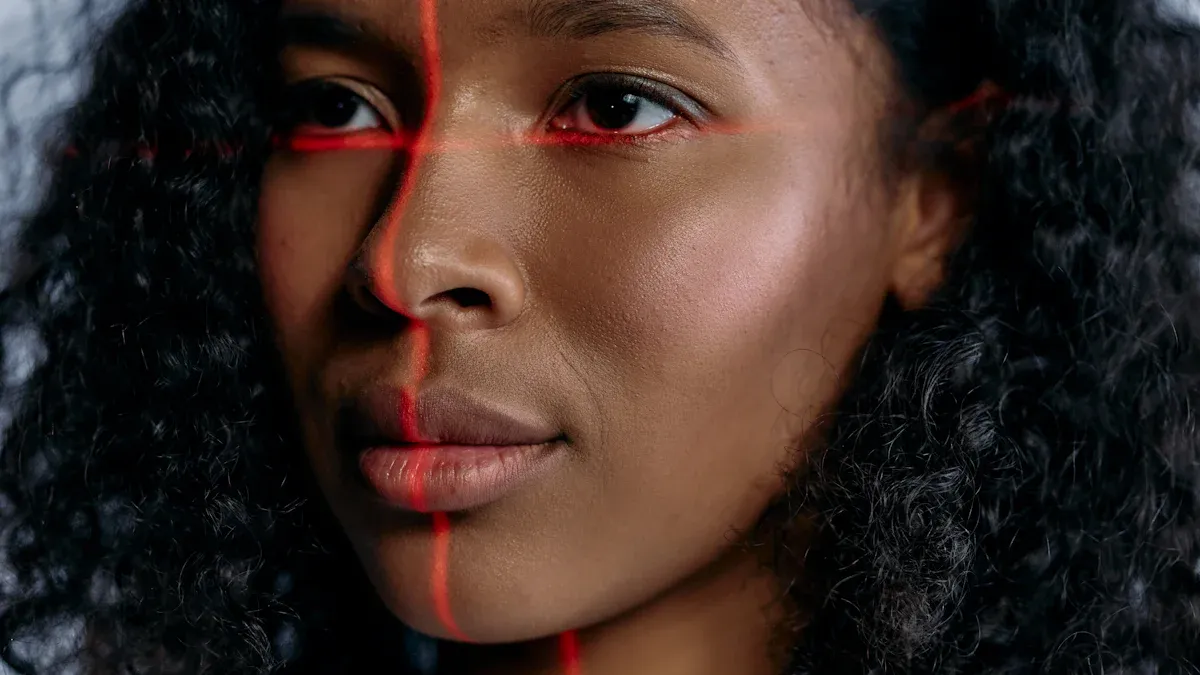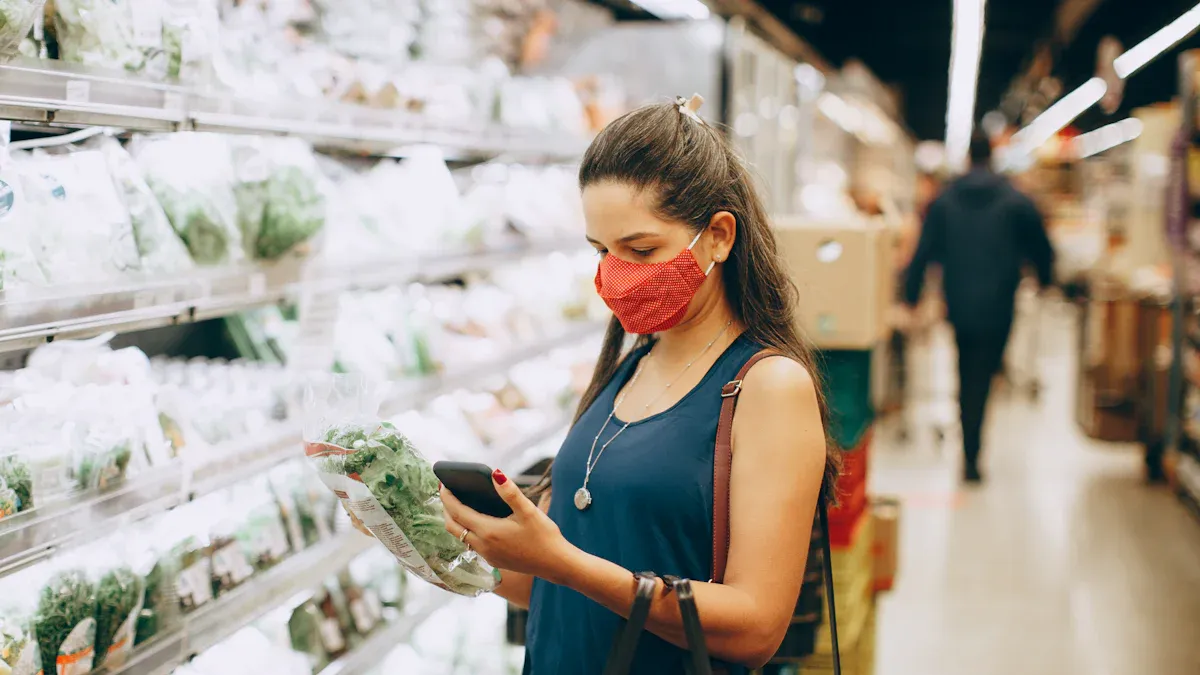Exploring the Future of Unmanned Retail with Facial Recognition

Facial recognition is making shopping different in unmanned retail stores. You get quicker checkouts and better security when you go in. This technology helps stores run better and makes shopping easier for you. You should look at the good things, but also think about privacy and what is right or wrong.
Picture going into a store where your face lets you pay and keeps you safe. How would this change what you do every day?
Key Takeaways
Facial recognition makes shopping faster. It lets people pay without touching anything. It also helps them check out quickly.
Stores that use facial recognition have less theft. This makes shopping safer for everyone.
Personalized shopping makes customers happier. Stores remember what people bought before. They also know what people like.
Facial recognition is easy to use. But shoppers should know about privacy rules. They should also learn how their data is used.
AI and facial recognition will keep getting better. Shopping will become more personal and faster.
Impact of Facial Recognition

Store Operations
Facial recognition is changing how stores work without staff. Stores use more machines and need fewer workers. This technology helps stores do things faster and easier. Cameras help keep shopping safe by spotting shoplifters and sending alerts. Stores say theft drops by 35% after using facial recognition. Stores save money because they do not hire as many people. It is easier to manage workers, so stores can help you better.
Here is a table that shows how facial recognition changes store operations:
Impact Area | Description |
|---|---|
Customer Experience | Makes shopping easier with touch-free payments and special suggestions based on what you bought before. |
Security | Stops theft by finding shoplifters and sending alerts, with a 35% drop in theft. |
Operational Costs | Saves money by needing fewer workers and making staff management better. |
Unmanned stores work better and faster. Stores are 20.8% quicker. Money earned goes up by almost 14%. Security is stronger because the system checks who goes into important areas. This keeps you and the store safe.
Customer Journey
Facial recognition makes shopping easier and more personal. When you walk in, the store knows who you are. You pay without touching anything and check out fast. The system suggests things you might like from your past buys. You feel welcome because the store remembers what you like.
Stores use facial recognition to see your feelings. They learn if you are happy or upset while shopping. This helps stores make your visit better. Some people like how easy it is, but others worry about privacy. About half of shoppers do not like facial recognition in stores. Some feel very negative, while a few feel good. Many people do not have a strong opinion.
Here are some ways facial recognition changes your shopping trip:
You check out faster and pay without touching anything.
The store gives you special suggestions.
The system looks at your mood to help you.
Some shoppers worry about privacy and mistakes.
You see fewer workers but more machines.
Tip: If you want shopping to be quick and easy, unmanned stores with facial recognition can help. If you care about privacy, learn how stores use your information.
Benefits
Security
Stores are safer when they use facial recognition. The system can find people who stole before. It sends quick alerts to workers if it sees them. Cameras check faces with a list of known shoplifters. The technology matches faces very well, even in busy stores. Fewer thefts happen because cameras and alarms scare thieves. Stores say theft drops by half after using these alerts and cameras. Workers can help you more because they do not have to chase thieves.
Evidence Point | Description |
|---|---|
Instant Alerts | Systems tell workers right away about shoplifters. |
Behavioral Analysis | AI looks for strange actions to stop theft. |
High Accuracy | The technology matches faces almost every time. |
Automated Alarms | Stores use alarms with facial recognition to catch repeat thieves. |
Tip: You feel safer shopping in stores that use facial recognition.
Checkout
Facial recognition makes checkout much faster for you. You do not need your wallet or phone to pay. The system checks who you are and lets you pay fast. Self-checkout lets you pay by yourself and keeps things private. You do not wait in line as long. Stores save money because one worker can watch many stations. You get special deals at checkout, like shopping online.
Facial recognition lets you pay quickly.
The system checks who you are and approves payment fast.
Self-checkout means less waiting and easier shopping.
Personalization
Shopping feels special because of facial recognition. You enter the store like logging into an app. The system shows ads that fit your age and gender. Workers know when you come in and can greet you. They can give you deals just for you. You see ads and offers that match what you bought before.
Application Type | Description |
|---|---|
Store Entry | You can go into unmanned stores with facial recognition. |
Personalized Advertising | |
VIP Customer Experience | Workers greet you and give deals based on your shopping. |
Note: You get more rewards and special offers when stores use facial recognition with loyalty programs.
Applications

Entry & Access
You can get into unmanned stores in new ways. Many stores use facial recognition to let you in fast and safe. Some stores, like JD.ID X-mart, use both QR codes and facial recognition. They track you while you shop and charge you when you leave. Biu lets you pay with your face. It also shows you products you might like from before. Inokyo asks you to scan a QR code to enter. It watches what you pick up using facial and body recognition. These systems make shopping easy and help you feel safe.
Store Name | Description |
|---|---|
Biu | Uses facial recognition for entry and payment, allowing product suggestions based on past purchases. |
JD.ID X-mart | Combines QR code and facial recognition for entry, tracking customers as they shop and automatically charging them. |
Inokyo | Requires QR code scanning for entry, tracks items picked up using facial and body recognition, and allows for payment via app. |
You will see cameras on the ceiling in many stores. These cameras watch the store all the time. They check who comes in and help stop cheating. Cameras also watch how you shop and help stop stealing. Stores use smart locks and cameras to keep some areas safe. Only workers with permission can go into places like storage rooms.
Real-Time Alerts
Shopping is safer with real-time alerts. Facial recognition helps stores spot people who should not go into certain places. If someone tries to enter, the system sends an alert right away. Security staff can act quickly. Cameras and smart locks watch how long someone stays in special areas. Stores say there is less stealing and better safety because of these alerts.
Alerts tell staff if someone enters without permission.
Stealing goes down and it is easier to watch the store.
Tip: You can trust unmanned stores to keep important places safe with smart tools.
Promotions
You see ads that match your age and what you like. Facial recognition helps stores show you special deals on screens and kiosks. The system looks at your face and guesses your age and gender. You might see different ads than other people. For example, a teen sees one ad, but an adult woman sees another. Stores use signs that change to give you deals that fit your shopping. These special ads help stores sell more and make your shopping feel special.
You get deals that fit your age and gender.
Stores use shopper data to show you the best offers.
Note: Personalized ads and deals can make shopping more fun and special.
Challenges
Technical
Sometimes, technology does not work as it should. Facial recognition can make mistakes with some people. It may not see your face well in bad light. Wearing a mask can also confuse the system. Data security is a big worry for everyone. If someone steals your facial data, they could pretend to be you. Companies try to fix these problems. They use better cameras and stronger ways to protect data. They test the systems more to make them safer.
Challenge | Description | Solutions |
|---|---|---|
Bias and misidentification | Some groups get misidentified more, causing false matches. | Train with many faces, use human checks, and set clear rules. |
Data security and misuse | Stolen facial data can cause identity theft. | Encrypt data, keep it for less time, and use strong controls. |
Technical limits in real-world | Bad lighting or masks lower accuracy. | Use better cameras and new ways to check faces. |
Facial recognition is very accurate at 99.97%. But mistakes can still happen.
Ethical
You may worry about stores using your face. Some people think facial recognition is not private. Others fear stores watch them too much or use their data without asking. Here are some common worries:
Racial and gender bias
Too much watching
No permission
Stores try to fix these issues. They ask for your permission and tell you how they use your data. They follow strict rules to keep things fair.
Note: You have the right to know how stores use your data. You can say no if you do not agree.
Privacy problems also mean tracking and losing your privacy. If someone steals your data, you could face identity theft or bullying.
Operational
It can be hard to trust new systems. Many shoppers like QR codes because they feel safer. Some people worry about losing money if the system makes a mistake. Unmanned stores have less help from workers. This can make you upset if something goes wrong. Mistakes with faces can cause trouble for you and the store.
Stores must follow strict laws. In Europe, the GDPR makes stores protect your data and get your permission. In the U.S., states have their own rules. Stores must work hard to follow all these laws.
Legal Framework | Impact on FRT Deployment |
|---|---|
GDPR (Europe) | Stores must follow strict rules for using your face data. |
State laws (U.S.) | Stores need your consent and must protect your data. |
Tip: Always check store rules before you shop in unmanned stores.
Future Trends
AI Integration
Stores are getting smarter every day. AI and facial recognition work together to help you shop. When you walk in, AI can say your name and show you things you might like. You do not need a loyalty card because the system remembers you. AI tells workers when to give you special deals.
Here are some ways AI helps unmanned stores:
AI knows when you come back and says hello to you.
The system gives you deals based on how you feel and what you buy.
Stores use AI to see which items are popular and where people go most.
You pay with your face, so it is fast and safe.
AI makes it easier to track worker hours, saving time and money.
Advancement | Application in Unmanned Retail |
|---|---|
Enhanced accuracy and speed | Stores learn about shoppers and make better ads. |
Biometric payments | You pay without cash or cards, just your face. |
High-resolution cameras | Stores see faces more clearly and quickly. |
Tip: Shopping is easier when AI and facial recognition work together.
Consumer Expectations
People want shopping to be fast and simple. Many shoppers now want to pay without touching anything. They also like getting deals that fit what they like. You may enjoy help from the store without asking for it. Unmanned stores are growing because people want more ease.
Experts say new ideas will change how you shop. Stores will use AI to know what you like and show you special products. You will see more ways to pay, like using your face or phone.
Innovation Type | Description |
|---|---|
AI-Powered Personalization | Stores use what you buy to give you special offers. |
Cashless and Cardless Systems | You pay with your face, QR codes, or your phone. |
Note: Stores will keep making shopping faster and more personal with new technology.
Facial recognition helps unmanned stores make shopping quick and personal. Experts believe this technology makes stores work better. It also helps you have a smoother time shopping. You should know how stores use your data. Ask questions if you are unsure.
Keep up with new privacy rules and changes.
Choose stores that tell you how they use your data.
People still decide how technology is used and improved.
FAQ
What is facial recognition in unmanned retail?
Facial recognition uses cameras and special software to see your face. Stores use this to let you in and help you pay. You can also get special deals without workers.
Is my face data safe in these stores?
Most stores work hard to keep your face data safe. They lock your information and follow privacy rules. Always look at the store’s privacy policy before shopping.
Can I shop without using facial recognition?
Some stores let you use other ways to get in or pay. You might use a QR code or an app instead. Ask the store what choices you have before you shop.
What if the system does not recognize my face?
If the system does not see your face, try again or use another way. You can ask for help from staff or use a help button if you need it.
See Also
The Future of Retail: Embracing AI-Driven Stores
Understanding the Growth of AI-Enhanced Convenience Stores
Navigating Walgreens Self-Checkout: Benefits and Hurdles
